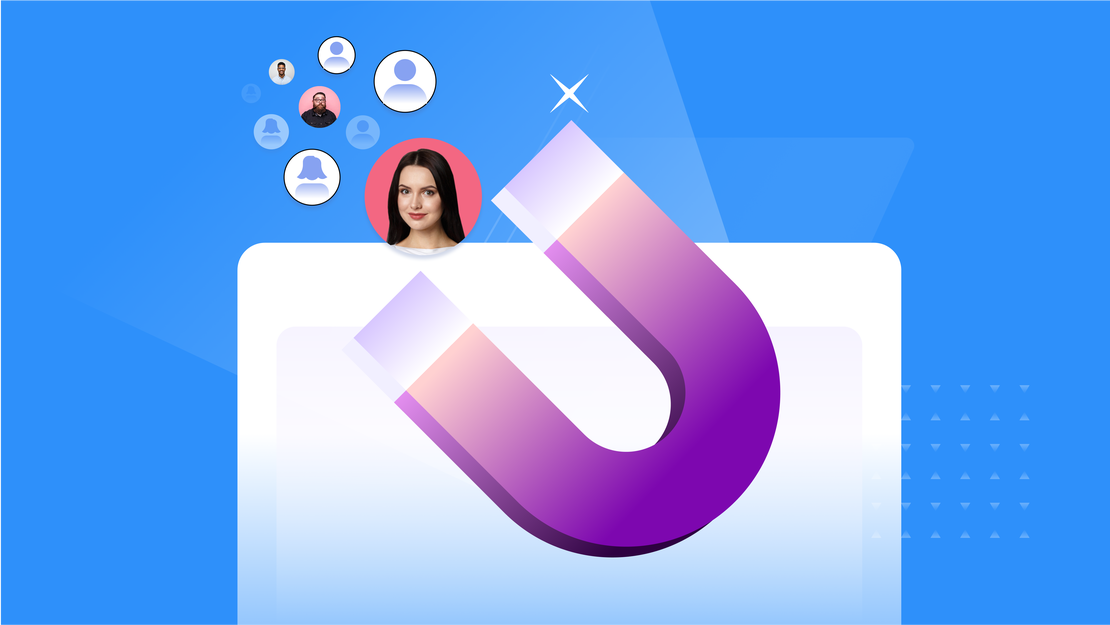Inbound Marketing: What Is It and How to Use It
If you’re not doing inbound marketing, then what are you doing—traditional marketing? That’s possible, of course. But keep in mind: the conversion rate for traditional marketing is much lower than that of inbound marketing.
Not quite sure what we’re talking about? Keep reading and discover the best strategy for attracting new customers or sponsors to your organization.

Table Of Contents
What is inbound marketing?
Inbound marketing is a way of marketing that attracts people with helpful or inspiring content, such as blogs, videos, newsletters, and social media.
When we talk about traditional marketing, we mean advertisements or commercials. Sponsored ads on social media also fall under traditional marketing in this case.
Inbound marketing is about people finding the content themselves, via Google or social media. They’re looking for a solution to their problem, and the content is tailored to provide that solution.
Difference between inbound marketing and content marketing
Does that mean that inbound marketing is the same as content marketing? No. Content marketing is part of it, but inbound marketing starts with the content, continues through to the purchase, and extends to after-sales care.
Inbound marketing consists of several components, such as:
- Content marketing (blogs, e-books, videos)
- SEO (findability via Google)
- Social media marketing
- Marketing automation (such as email funnels)
- Lead nurturing
- CRM integration
Why is inbound marketing important?
Do you know anyone who likes traditional marketing? Who is genuinely interested in an advertisement, a cold call (when you receive a call from a stranger with a “great” offer) or a banner? No, neither do we.
But when you search Google for a solution and find a good article or useful checklist, you feel very different, right? You want to read more and learn more about the organization or person. That is the power of inbound marketing.
With inbound marketing, you attract the right people, build a relationship before any sales conversation takes place, and marketing becomes something that adds value.
For small and large organizations, and even for government agencies and NGOs, there are significant advantages:
- It has lower costs than traditional advertising.
- It is sustainable; a good blog or e-book continues to work for you without you paying per click.
- You attract people who are already interested, which gives you a head start in selling your service or product.
- It is measurable and scalable. With tools such as Google Analytics and CRM systems, you can clearly see what works and what doesn’t.
- It gives you confidence and authority. You show that you know what you are talking about, and that works better than most sales pitches.
The future of marketing: automation and personalization
Artificial intelligence (AI) is bringing about a major change in the world of marketing. Automation plays a major role in this. You can send emails automatically based on behavior, you can use an AI agent for your customer support or customer service… everything to increase efficiency and accessibility.
In addition, personalization is becoming increasingly important. People don’t want to be helped by robots. They don’t want to be addressed or treated like a number.
And there’s no need for that. Suppose you run an NGO and want to create a quiz about CO2 emissions. By using a CRM tool, such as FlowQi CRM, you can send visitors a personalized step-by-step plan and a series of emails with tips. You can then link your CRM tool to your email platform.
Everything then runs automatically, but still feels personal to the visitor. Curious about how our user-friendly and intuitive CRM tool works in practice? Sign up for our BETA Program and try out all our software for free!
What is the difference between inbound, outbound, and account-based marketing?
In addition to inbound marketing, there is also outbound and account-based marketing. It’s good to know what all this entails, so you can choose which form best suits your organization.
Outbound marketing
With outbound marketing, you actively approach people with your offer. We are talking about cold emails, telephone acquisition, advertisements, and direct messages.
Think, for example, of someone who sends you a message via LinkedIn with an offer for a free consultation. The advantage of this is that contact is made quickly, but a major disadvantage is that it can be perceived as intrusive. The conversion rate is therefore lower than with inbound marketing.
Account-Based Marketing
Then there is Account-Based Marketing (ABM). ABM focuses on attracting larger customers (accounts). You focus your marketing and sales on a select group of companies that you really want to attract.
Think of a personalized proposal or a white paper that you create specifically for a potential large customer. The advantage of this is that it is targeted, personal, and often works well in B2B. But the disadvantage is that it takes a lot of time and preparation, and it only works if you choose the right companies.
When should you choose inbound, outbound, or account-based marketing?
Whether you should choose inbound, outbound, or account-based marketing depends on your target audience, your budget, and your product or service. A combination of these approaches can also work well.
- Inbound: Choose inbound if you want to build long-term trust, organic traffic, and a sustainable stream of warm leads.
- Outbound: Choose outbound if you want quick visibility and your target audience is difficult to find on its own.
- ABM: Choose ABM if you know who your customers should be and you can approach them personally with customised solutions.
A CRM tool is crucial for inbound marketing
A CRM tool is the engine behind successful inbound marketing. You know who your leads are and where they are in the customer journey, so you can tailor your communication to their behavior and interests.
Sign up for our BETA Program and try our CRM tool for free–along with all our other software!